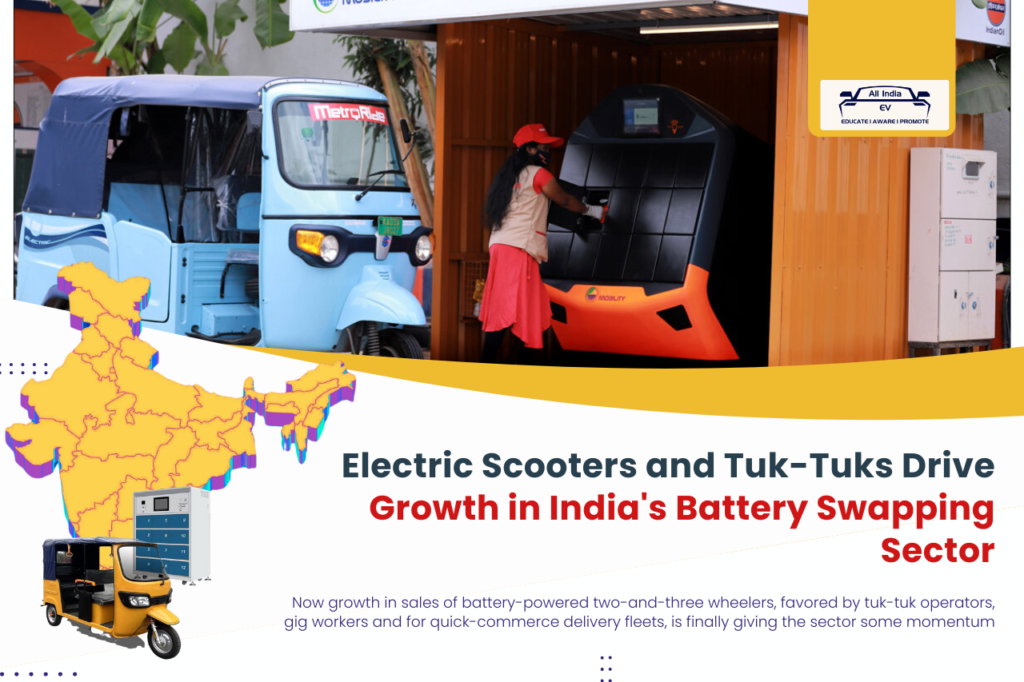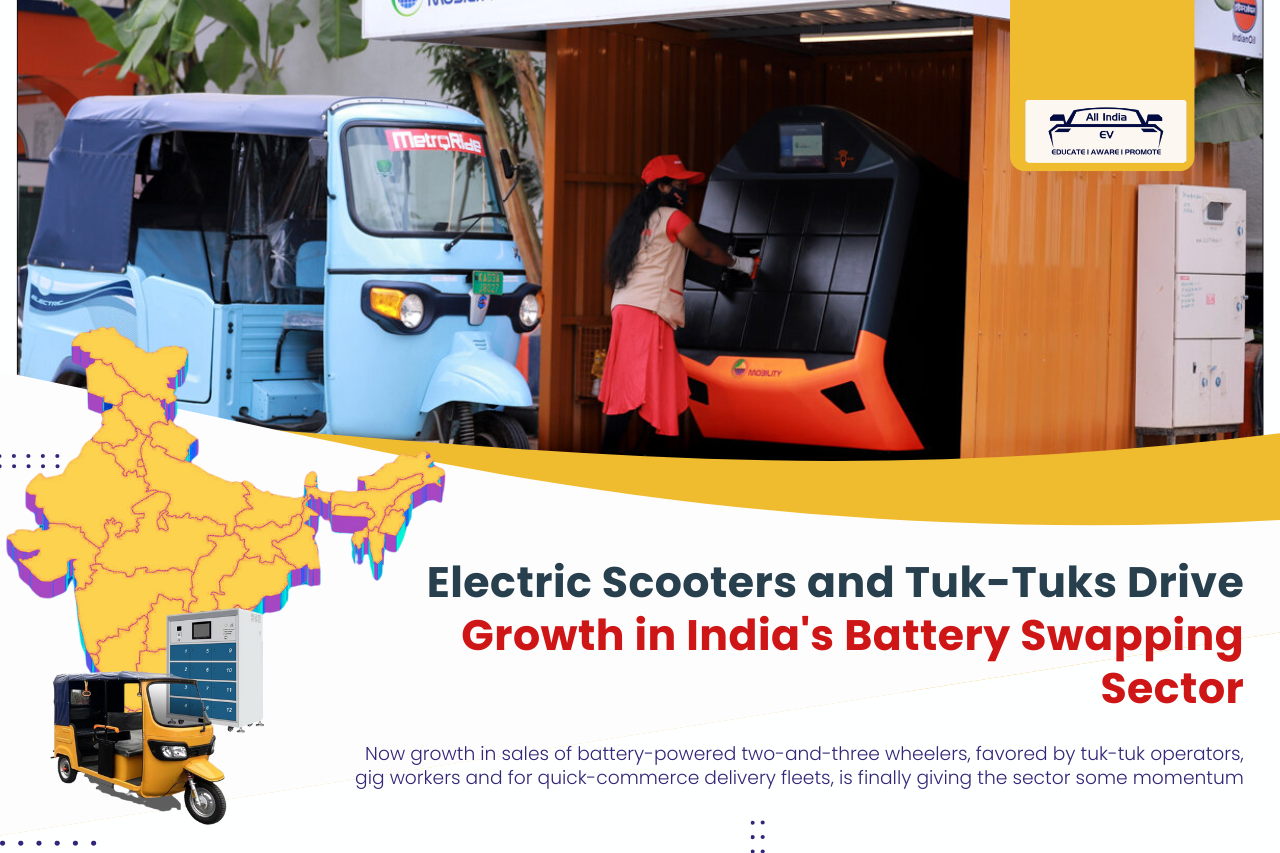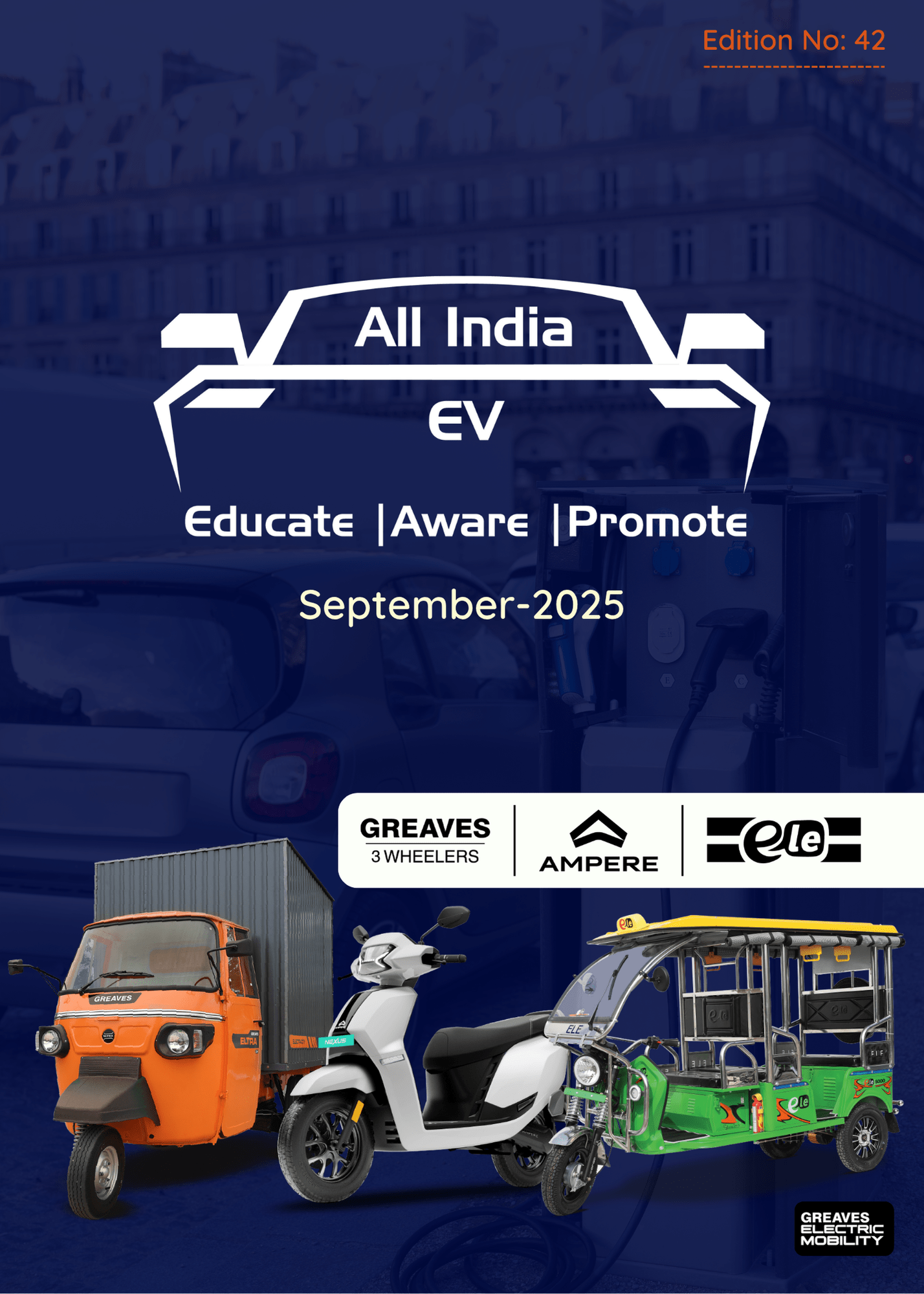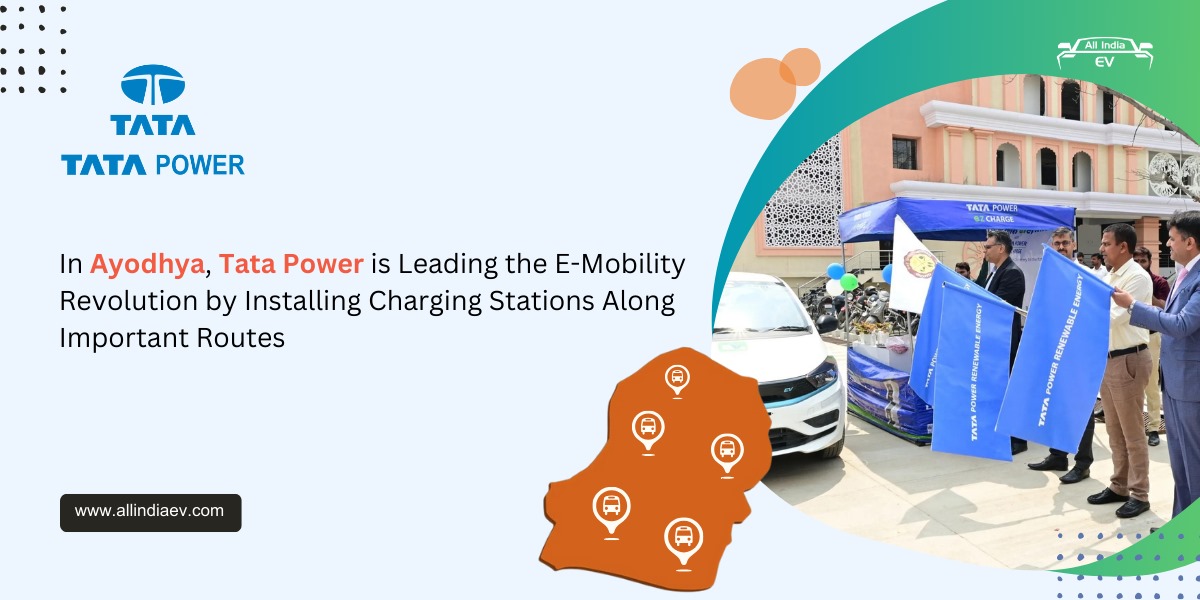
Electric scooters and tuk-tuks fuel India’s battery swapping boom, making EV adoption faster, smarter, and more accessible nationwide.
India’s electric vehicle (EV) revolution is shifting gears—and this time, it’s the humble two- and three-wheelers that are leading the charge. As electric scooters, motorcycles, and auto-rickshaws increasingly replace fuel-powered vehicles, a quiet but powerful transformation is taking place: the rise of battery swapping.
While fast charging infrastructure continues to expand, battery swapping is emerging as a game-changing solution for India’s gig workers, delivery riders, and tuk-tuk operators—who simply can’t afford to wait around for a recharge. The promise? A full “refuel” in under five minutes by swapping a depleted battery for a fully charged one at designated kiosks.
India’s push for electrification in the last-mile and commercial transport sectors is now giving this technology a boost.
🔄 The Numbers Speak
Battery-powered three-wheelers made up 57% of new registrations in 2024, while electric two-wheelers touched 6%, up significantly from less than 1% in 2020, as per BloombergNEF data. That shift is breathing new life into the battery swapping model.
Industry leaders like Battery Smart and Sun Mobility are scaling up fast. Battery Smart has already crossed 1,400 swapping stations across 40+ cities, focusing on commercial EVs. Meanwhile, Sun Mobility, in partnership with Indian Oil, is expanding its 800+ station network, with both firms raising significant capital—over $1 billion collectively—to build nationwide swapping grids.
According to government estimates, India will require over 26,000 swapping kiosks by March 2026 and a whopping 111,000 kiosks by FY2030. Currently, there are around 2,600 kiosks, primarily concentrated in Delhi.
⛽ Big Players, Bigger Ambitions
Fuel retail giants like Indian Oil Corporation and conglomerates like Reliance Industries (under its Jio-bp Pulse banner) have voiced ambitions to dominate the swapping game. However, the lack of industry-wide standards and interoperability has slowed progress.
Speaking candidly last year, Reliance BP Mobility CEO Harish Mehta pointed out that unless swapping batteries become standardized, it will remain difficult to scale networks efficiently across OEMs and states.
🌍 Global Benchmarks & Local Realities
Compared to China—where companies like Nio Inc. operate nearly 3,000 swap stations and tech giant CATL is investing billions to expand further—India’s ecosystem is still evolving.
China’s model even targets SUVs and trucks, while India’s swapping efforts are currently focused on two- and three-wheelers, which form the bulk of our EV base. But with hyperlocal delivery services booming, India’s unique market may just have its own path to mass adoption.
🚫 What’s Holding India Back?
The lack of interoperability—that is, the ability for different vehicle brands to use common battery modules and swapping stations—is the single biggest roadblock, according to BNEF’s Komal Kareer. Unless automakers collaborate and open up their IP, consumers will remain locked into brand-specific ecosystems.
Additionally, policy uncertainties—especially around FAME subsidies for swapping tech—have slowed rollout for global players like Taiwan’s Gogoro, who had announced plans for 15,000 kiosks across India but faced delays.
⚡ Fast Charging vs. Swapping: A Future Face-Off?
EV manufacturers like Ather Energy and BYD are betting on faster charging technology. BYD recently introduced a platform that promises a 5-minute full charge for cars—though this isn’t directly aimed at India’s current two- and three-wheeler market.
Still, for commercial users where time literally equals money, battery swapping remains an attractive option. As Swiggy, Zomato, and other quick-commerce giants commit to full EV fleets by 2030, the demand for ultra-fast turnaround solutions is only going to grow.
📢 India EV’s Take
At India EV, we believe battery swapping is no longer a “side story” in India’s EV journey—it’s becoming a core enabler for electrification in urban logistics and daily commute segments. But if we are to unlock its full potential, we must address the standardization challenge, build interoperable ecosystems, and align policy support with real-world use cases.
Battery swapping isn’t just about convenience—it’s about building an inclusive and scalable EV infrastructure for the future of India.










